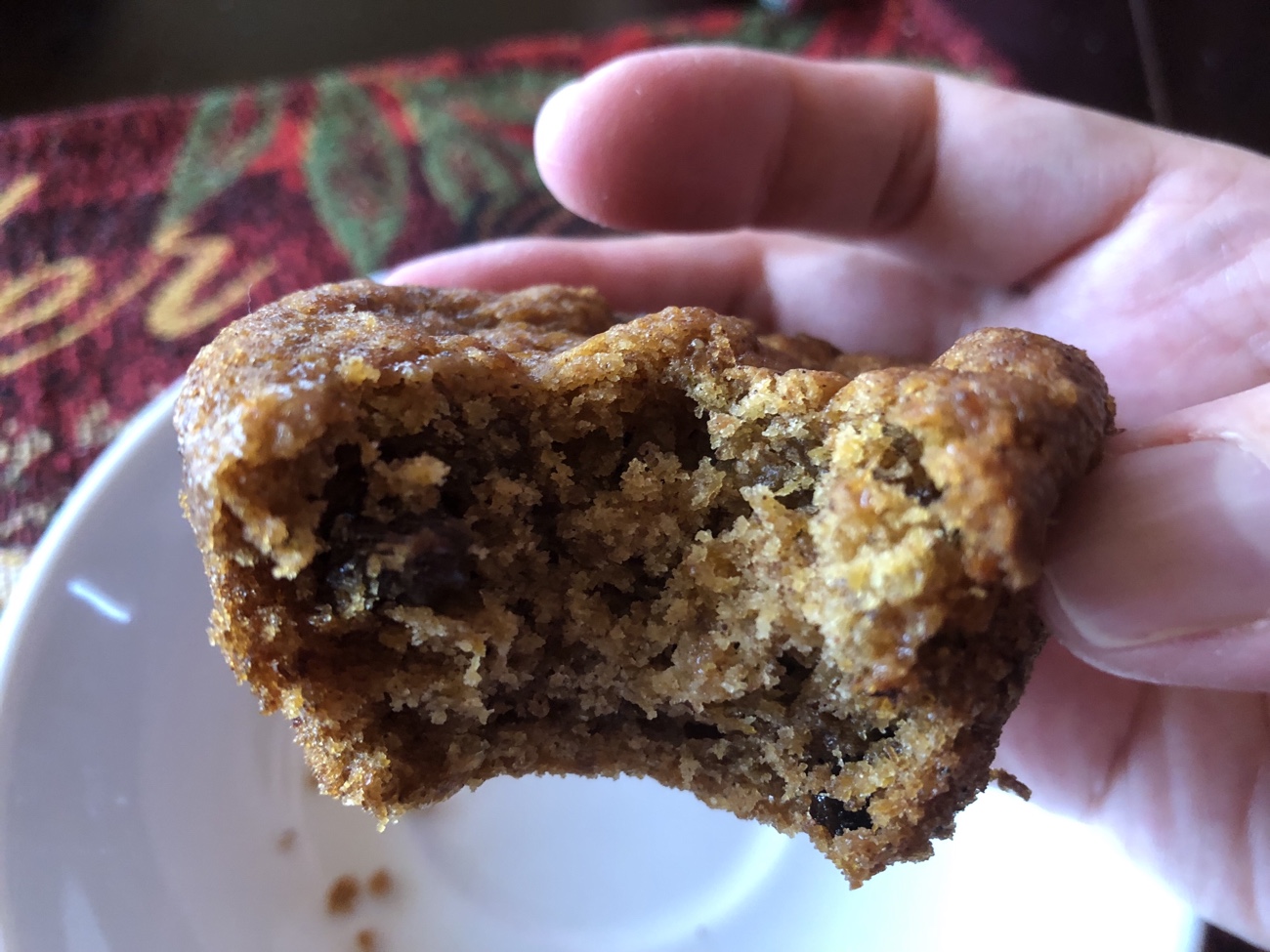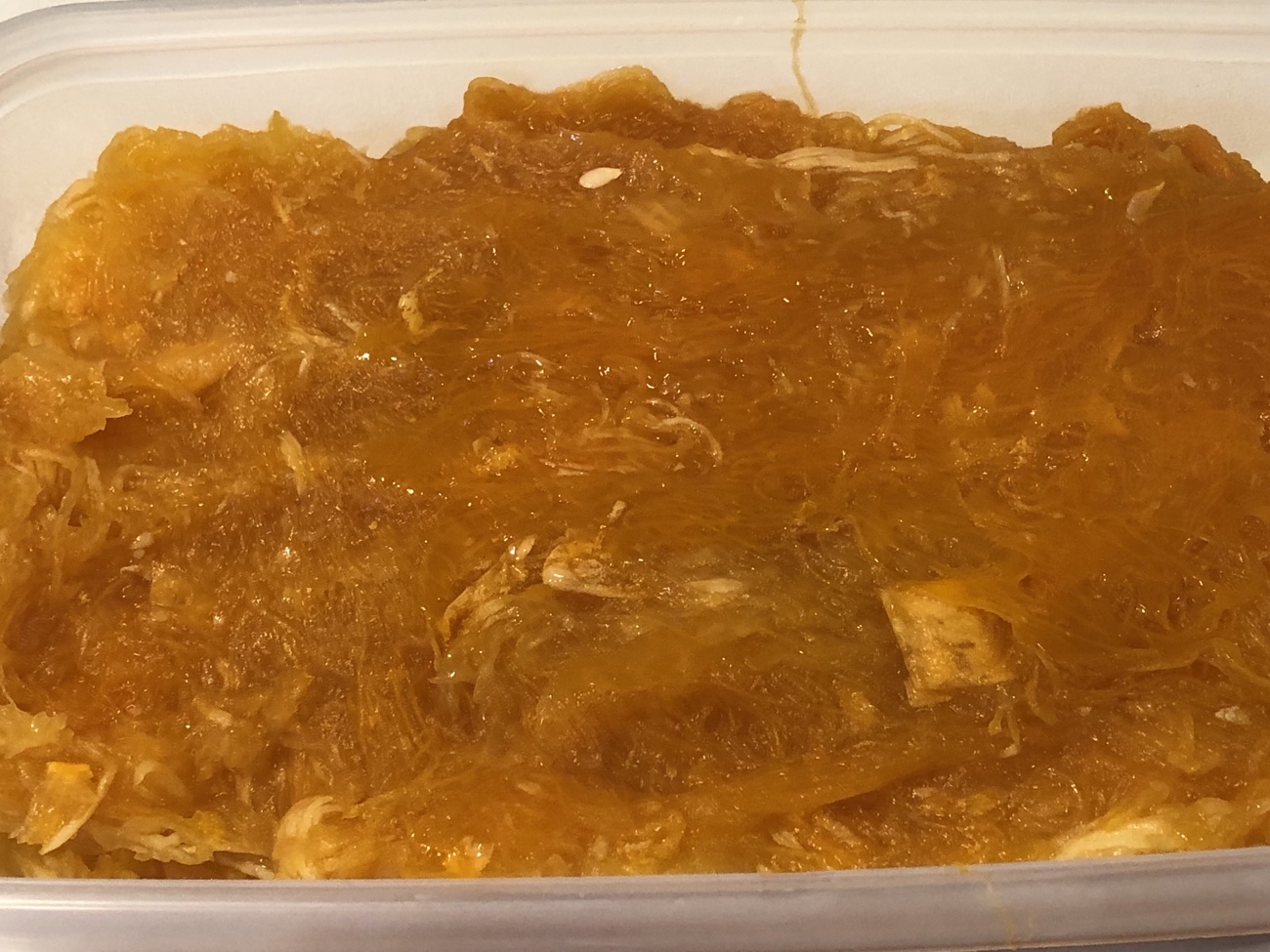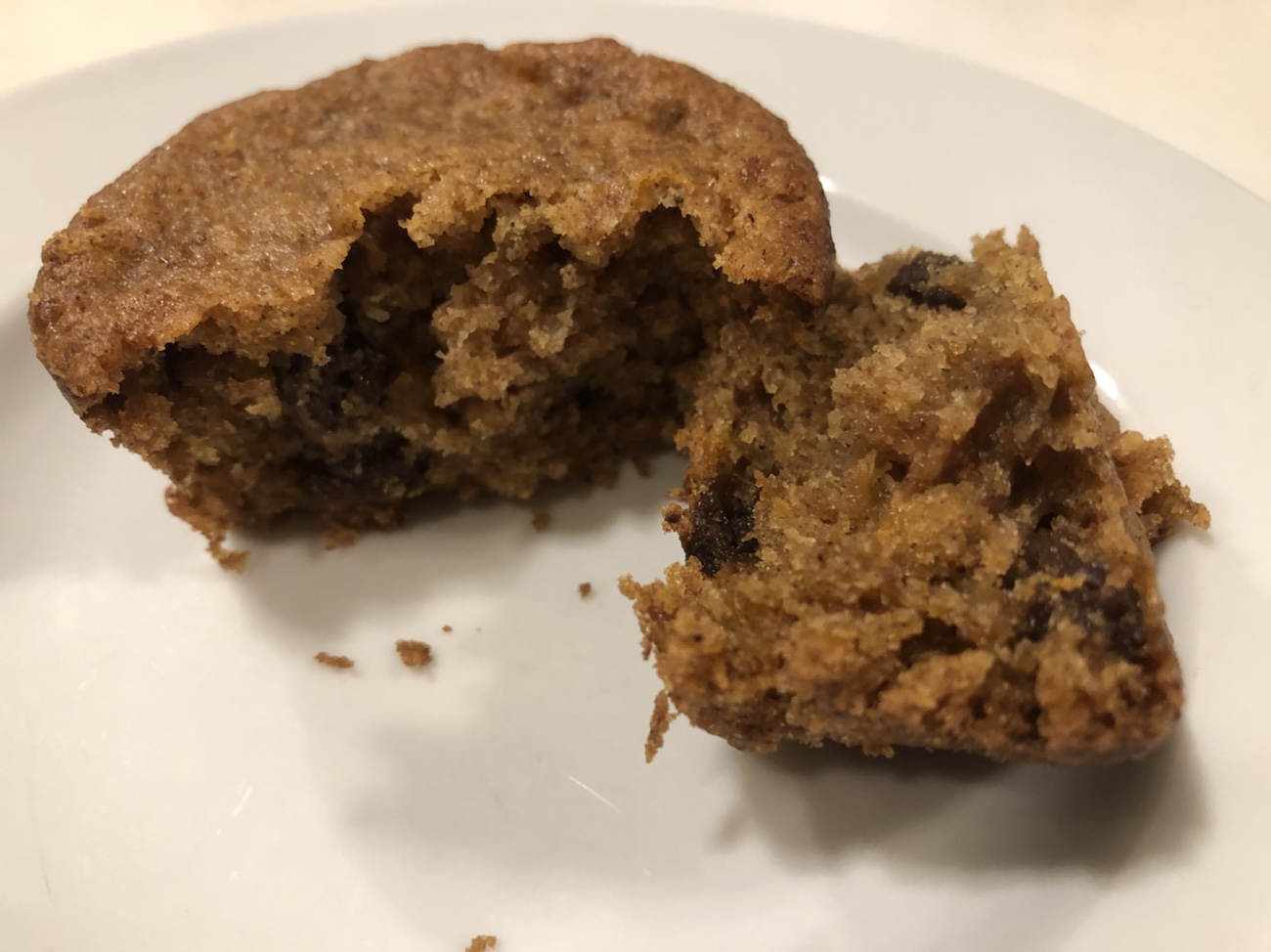
This is the second post in a series on how I’m using as much of the pumpkins we carved for Halloween as possible. In my previous post, the Ghostbuster-themed jack o’lanterns’ innards provided delightful roasted pumpkin seeds. With plenty of the stately squash left, I needed to find other ways to use it. So why not a dark, toothsome muffin that utilizes the pumpkin “guts”?
It began with a recipe for pumpkin muffins…and I took liberties. I was looking, specifically, for something that could incorporate the stringy, slippery innards of the pumpkins and transform them into something tasty. If the recipe called for canned pumpkin, why not sub fresh (raw) pumpkin?

In that vein, I used two cups of the pumpkin, scraped from the insides of the jack o’lanterns (seeds removed) and puréed in my mini food processor, in place of the canned pumpkin. Did it look exactly like canned pumpkin? No. You may already know that canned pumpkin is typically not made from the same type of pumpkins that are grown for jack o’lanterns; in fact, canned pumpkin is often comprised of a type of pumpkin, called a Dickinson pumpkin, that resembles a butternut squash. It seems that there was a big flap about canned pumpkin actually being made from “squash”; ironically, pumpkin is a type of squash, so the debate is largely around semantics. And, really, who cares if the canned “pumpkin” being used to make a pie or other baked goods is “actually” pumpkin or squash? I bet a butternut squash pie would be tastier than a pumpkin pie.

One of the noticeable differences with the fresh pumpkin purée was that it contained a lot more moisture than canned pumpkin. In the final product, I think it contributed to the overall moistness and, sadly, the failure to rise into a nicely domed top. I also omitted the eggs, opting instead to make flax eggs; this change also likely contributed to the very dense and moist texture. To learn more about the differences in how eggs and flax perform in baked goods (including the science behind it), check out VeganBaking.net’s article.
I nearly keeled over when I saw that the recipe called for 3 cups of sugar. Bearing in mind that the recipe made 24 regular-sized muffins (it says 36, but I only got 24), that’s 1.5 cups of sugar per dozen. Nope. I cut that to 1 cup of raw sugar plus 1/2 cup Pyure (stevia/erythritol blend), and it was plenty sweet. I used more sweetener than I might otherwise have, knowing that the pumpkin purée wouldn’t be sweet (and the raisins add sweetness, too).
So the finished muffins had a few drawbacks: they were extremely difficult to get out of a well-oiled muffin pan without casualties (aka “samples”); they’re moist to the point of being a little sticky; and they’re kind of flat. What really counts in my book, though, is the taste – and they tasted great. They reminded me a lot of bran and raisin muffins, with the same hearty texture. Who knew pumpkin guts could make such a moist muffin?
 Stay tuned to see what’s next in the “use it all” series!
Stay tuned to see what’s next in the “use it all” series!

Comments are closed.